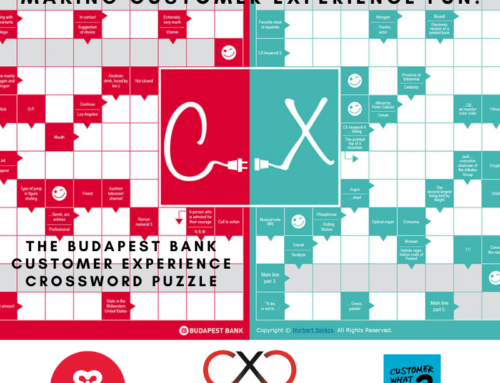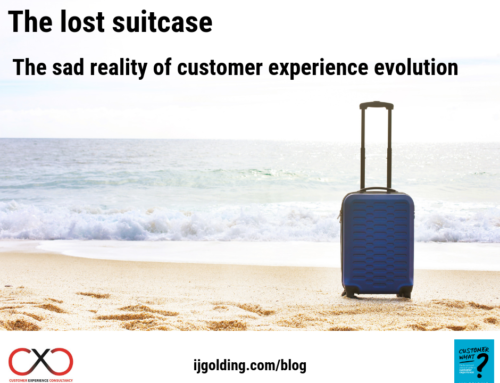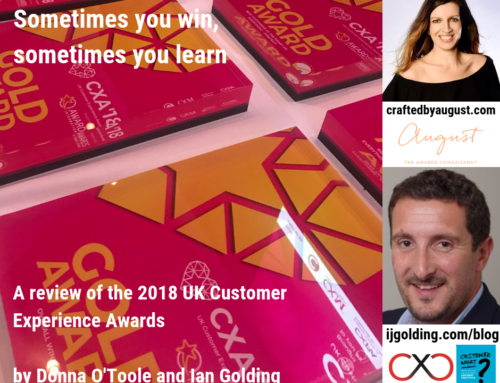
Customer personas; buyer personas; call them what you will – businesses (notably marketing functions within them) have been creating and using this visual and descriptive method to ‘bring customers to life’ for many years. As Customer Experience has established itself across sectors globally, Customer Personas (if I may call them that) are now a core tool in the armoury of the Customer Experience Professional.
Like most professional specialisms, Customer Experience – and the competencies that define it – contains a whole host of tools and techniques that are deployed for a variety of reasons. The skill and experience of the professional will determine what tools are used and when to have the maximum effect on achieving business and customer goals.
The problem with any specialism containing a set of tools is that there is too often the temptation to ‘dump’ them into a literal checklist. In other words, with a desire to demonstrate a level of competency, every tool, technique and method (literally) are used and ‘ticked off’ in the name of the profession – whether it is appropriate to use the tool or not.

When I was plying my trade as a Lean Six Sigma Master Black Belt, the world’s desire to embed the popular process improvement methodology led to millions (and I mean millions) of professional people all over the world being trained to use a ‘toolkit’. In order to achieve accreditation (as a Yellow Belt, Green Belt or Black Belt), individuals would have to complete ‘on the job’ projects – demonstrating the use of EVERY tool in the box. The problem was (and still is) that most of these people ended up using tools and techniques ‘for the sake of using them’ – when much of the time, the usage of a particular tool was completely unnecessary in the circumstances.
The world of Customer Experience is at risk of following the same rocky road. As I often say out loud in my teaching assignments, if I was given $10 for every time someone told me they had created a customer journey map BUT ‘did not know what to do with it’, I would be a VERY rich man! Customer Experience is NOT a methodology that can be deployed as a checklist – as a set of ‘off the shelf’ standard tasks that must be used in every situation. In fact Customer Experience is one of the only professions in the world where, right now, no textbook exists. It is an experiential profession that relies on the competence of the Customer Experience Professional to know what tools, techniques and methods to deploy at the right time.
One of the tools that seems to be falling foul of the ‘I must complete the checklist’ phenomenon is the good old ‘Customer Persona’. I often find it amusing to see the facial reaction of people within businesses when I talk about personas. People generally roll their eyes, muttering ‘we have those’ – when I ask them if they are used effectively in the organisation, or if they are just done ‘for the sake of it, overwhelmingly people opt for the latter.

The thing is, when it comes to managing the Customer Experience, bringing the customer to life through the creation of personas is actually very important – BUT – there is always one of those – only if you actually intend to use them! So many organisations are still failing to connect their brand proposition or purpose to the needs and wants of the different types of customers who interact with them. In fact, one of the major problems is that companies are not clear of their purpose in the first place – hence there is an evident lack of clarity as to which types of customer the business is focused on at all!
A good customer persona COULD contain elements that include:
- Demographics
o Are they male or female?
o Age
o Relationship Status
o Children?
o Educational background
o Work status
o Earnings
o Where they live
- Behaviours and Attitude
o Preferred channels of interaction
o Attitude towards your products or services
o How good their level of knowledge tends to be towards your products & services
o What products and services do they already use?
o Are they tech savvy?
o Are they conservative or innovative?
- Things they Value
o What are their dreams and aspirations?
o What do they value most from the companies they interact with?
o What are their key motivations
o What are their goals in the short and long term
o What problem, question, needs or want do they have or can we solve, answer or satisfy?
Obviously, these are just examples – you would substitute and amend these questions depending on whether the persona is a consumer or an employee in a business. Whoever is represented by the answers, it is not difficult to see how powerful it would be to know what the answers to these questions are. It is not difficult to understand that if you have this kind of clarity of who your customers are, that if you align your proposition to their wants and needs, you can confirm if you are likely to ‘turn them on’, so to speak!
Not understanding your customer personas leaves a business at risk of creating a proposition that does not meet customer needs – it is as simple as that. The key is that you USE them – here are some practical uses of the persona as a ‘checklist’ (I hope you get the irony here…):
- Inform strategy – by deciding which segments to target; and by building compelling ‘value propositions’
- Improve efficiency – by lowering your cost to serve different types of customer
- Acquire customers – by targeting growth in a particular segment; by adding features or benefits to a particular segment by type or value
- Retain customers – through specific campaigns aimed at retention of certain segments; by improving propositions and addressing areas of customer dissatisfaction; by improving general engagement with particular customer segments
- Deepen customer relationships – by targeted “next product” campaigns; with effective loyalty incentive for a particular segment
So coming back to the question in the title of this post – ‘is there any point creating customer personas? The answer (in my opinion) is a big fat YES – but only if you actually intend to USE them!!
This post was originally written exclusively for my column on CustomerThink – a global online community of business leaders striving to create profitable customer-centric enterprises. The site serves 80,000+ visitors per month from 200 countries.
You can read my column here!







Couldn’t agree more, Ian. Having the persona is not enough. Use them or lose them. Also: be sure that they DO reflect your genuine target audience, first. And, lastly, make sure they’re not caricatures of customers – there should be enough depth of insight in personas to make them ‘real’. If they’re not based on your real customers, I wonder how valuable they really are… But that’s another topic for another time.
Ian, You are right regarding personas’ application; in fact, one may “extrapolate” this to CX/CEM in general. It does not make to much sense to know Your Customer, unless You are not making the changes to link the product and services with Customer’s needs and values. And this is what management is all about – to plan and to introduce the changes within the organization.